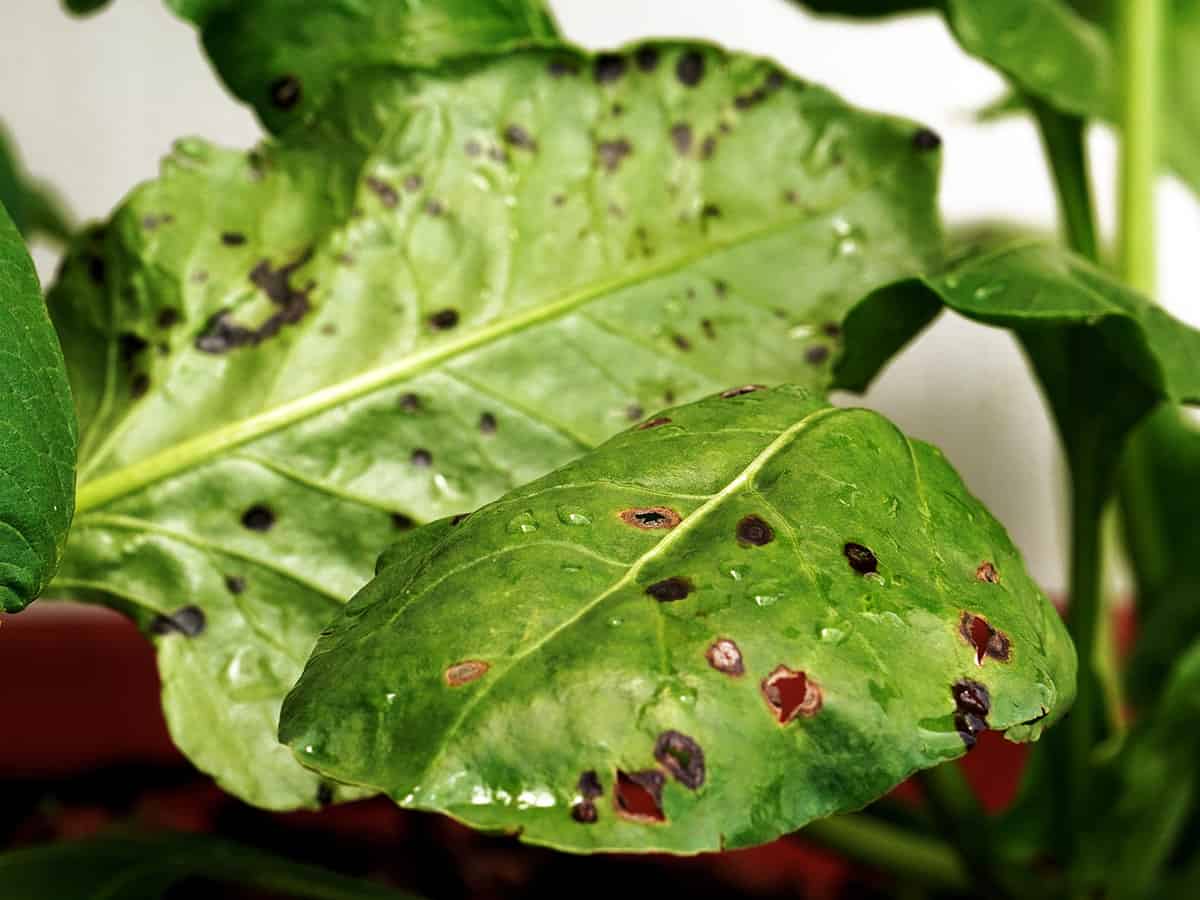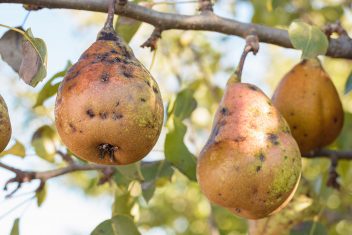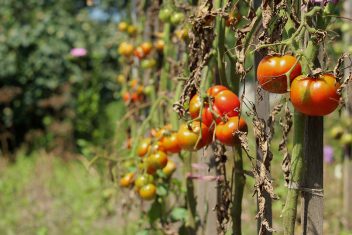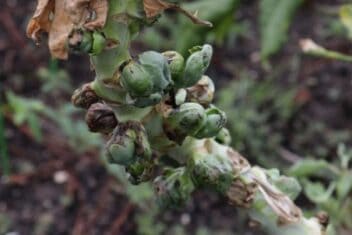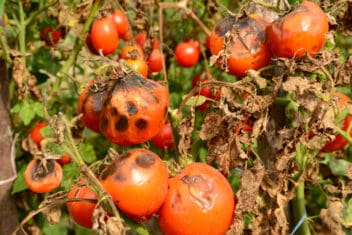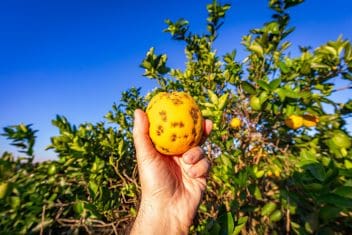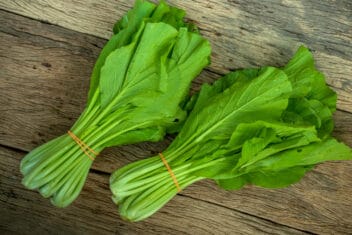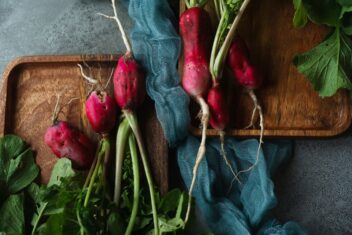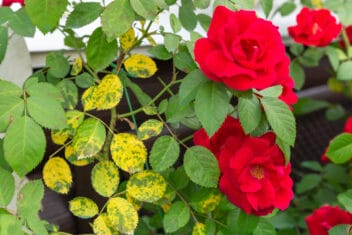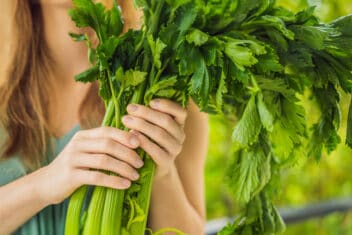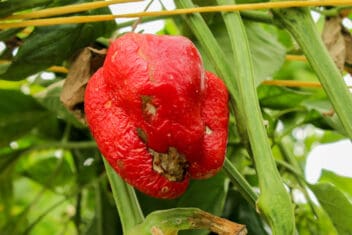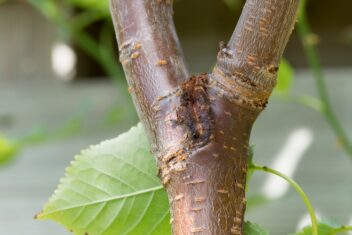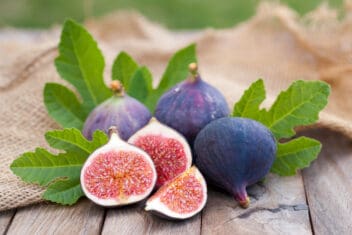Don’t you get sick of all the pests and diseases that affect your plants? There are so many bacterial and fungal diseases out there that it’s inevitable that you’ll encounter one (or more) at some point. One of those many fungal diseases is Cercospora leaf spot.
It’s a common disease and immediately recognizable by the little spots it causes. It impacts many plants, particularly those in the beet and nightshade families, and certain weeds.
What is Cercospora Leaf Spot?
Cercospora leaf spot frequently impacts plants in the beet family and spreads via the fungus Cercospora beticola. It’s infectious and can hide in soil and seeds, and thrives in humidity.
It’s pervasive in plants like swiss chard, spinach, and table beets and spreads quickly once established in your garden.
You can also get this disease on ornamental plants like hydrangeas from the fungal species Cercospora hydrangea. Roses can get this fungal disease as well via Cercospora rosicola. Eggplants and other nightshades are impacted by Cercospora melongenae.
Cercospora leaf spot doesn’t usually kill your plants, but it causes them to lose vigor, making edible plants unattractive. Vegetables like beets will fail to grow to a decent, usable size, and you can’t use leafy greens.
The disease usually takes hold well before the signs are evident, so management and prevention are key. It is better to prevent fungal diseases than fight them once they are already infecting your plants.
What Causes Cercospora Leaf Spot?
Certain conditions cause the fungus to thrive.
These conditions include when the foliage of your plants is wet for extended periods of time at night and there is high humidity.
Late summer high temperatures during the day play a significant role as well.
The optimum temperatures for the spores to survive is between 75ºF and 85ºF. Combined with humidity and moisture, they can be spread by rain splash, irrigation, tools, wind, and insects.
Cercospora is wind-borne, so it can spread rapidly through spores, once it’s present. Water splashing on the plants is also an infection pathway. That’s why overhead watering can often create perfect conditions for the fungus. You can also spread it through dirty garden tools.
Severe outbreaks in your garden may follow extended periods of rain in summer or hot weather. Although a wet summer can often be a blessing for harvests, it can also cause many diseases in the garden.
How Cercospora Leaf Spot Affects Your Plants
As the fungal spores germinate, they penetrate the stomata of the leaves. Stomata are small pores, usually on the undersides of leaves.
The initial signs of Cercospora leaf spot are small light brown spots that are paler toward the center and may have a reddish edge.
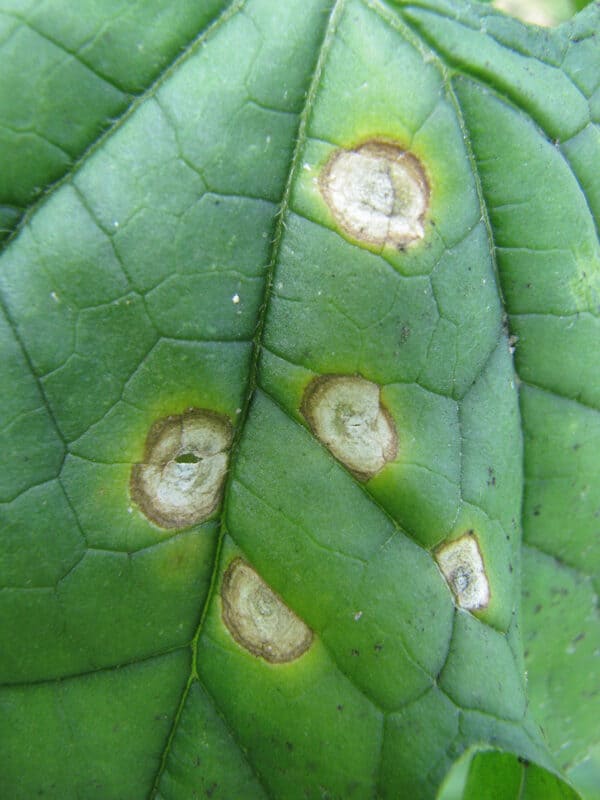
These lesions expand outward, joining together as they grow. The color changes to grey, and the foliage dies. It may become so dry it crinkles in your hand when you crush it.
Cercospora spores can survive in the soil for up to two years, and because an infected plant produces so many spores, it doesn’t take much of an infection to produce a lot of spores in the soil.
Plants Typically Affected by Cercospora Leaf Spot
Many plants are affected by Cercospora leaf spot, and symptoms can vary depending on the plant.
Carrot
With carrots, the leaves will show the tell-tale spots, usually along the margins. The leaves will also turn yellow and curl. Young foliage is affected more than older leaves. Humid weather after infection will see rapid spread to all of the foliage.
Spinach, Beets and Swiss Chard
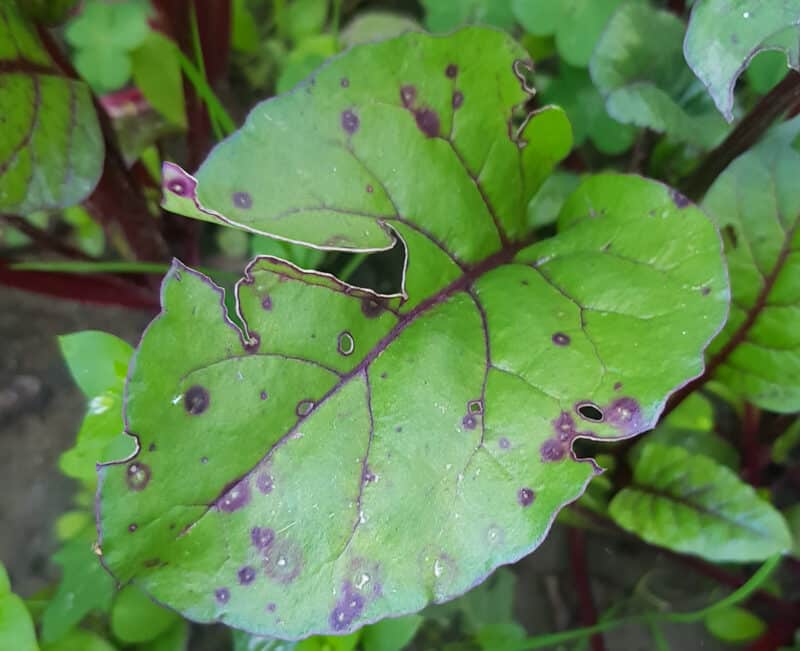
With these plants, you’ll brown spots with red edges first before they expand to cover the entire leaf. Over time the center turns grey and brittle. The leaves can become woody and bitter and may affect the crop amount and quality. Spread is swift on these plants in the right circumstances.
Chilis
On chilis, lesions develop on the leaves, stems, and where the two intersect (called the petiole). The centers of the lesions dry out completely and crack. They often fall out, leaving a ragged hole.
Okra
Okra leaves roll before wilting and dying completely. The lesions are much darker than any other plant infection.
Other crops affected by Cercospora leaf spot include:
- Beans
- Watercress
- Eggplant
How to Get Rid of Cercospora Leaf Spot
Before you jump on the chemical treatments, you can use several preventative and environmental strategies to keep this disease in check.
1. Sanitation
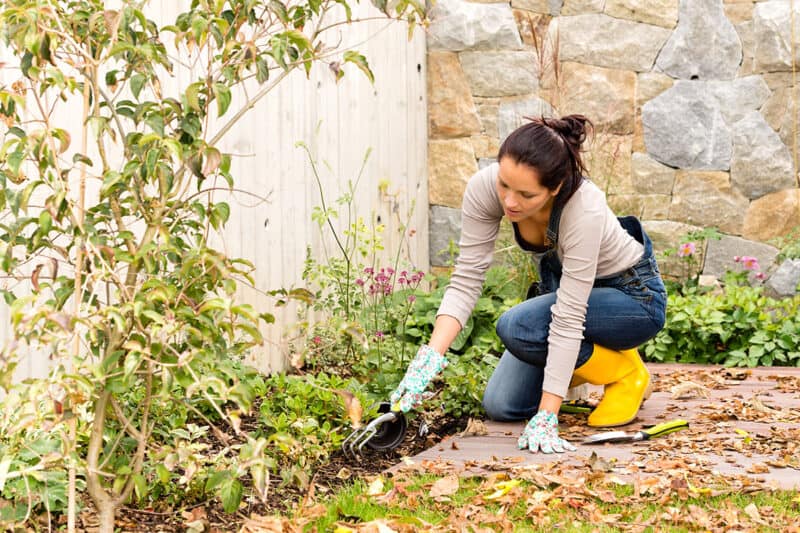
This is super is important. Sanitation includes the garden and soil as well as your tools. Remove all debris as it falls onto the soil, and make sure you clean your garden tools regularly. Place all leaves and garden waste in a garbage bin or fire. As soon as you think you may have Cercospora leaf spot, step up the hygiene.
2. Treated Seeds
Buy and plant seeds certified disease-free or treated with fungicides to avoid introducing Cercospora into your garden. Unfortunately, if you get seeds from someone who has allowed a plant infected with Cercospora to go to seed, you will likely transfer the fungus to your garden.
3. Rotate Plantings
If you have an outbreak of Cercospora, it’s best to rotate the susceptible plants out and plant crops that don’t host the fungus for at least two to three years. You want to try and eliminate the spores before you plant susceptible crops again.
A good crop rotation plan is always a smart idea.
4. Water at the Soil Level
Avoid overhead watering if it will leave the foliage wet for long periods of time. Water at the base of the plant during the day so there is enough time for the plant to dry out. Remember, wet foliage and high humidity are a playground for Cercospora leaf spot.
5. Trim Infected Leaves Away
Remove leaves as they become infected. Often you’ll see Cercospora leaf spot symptoms early, so remove the foliage that is affected straight away. Burn it or throw it in the garbage, not in your compost bin, as this will spread the fungal spores.
Older leaves are more susceptible in the early stages of the disease. As it progresses, it will spread to younger leaves.
Don’t be afraid to remove the whole plant of it means avoiding the spread of this fungal disease.
6. Don’t Allow Plants to Become Stressed
By far, the most common time to get Cercospora leaf spot is at the peak of summer when the plants become stressed from lack of water.
Water your plants well, but at the base, not over the foliage.
7. Control Insects

Many insects can spread this fungus. I use pyrethrum spray either on its own or added to neem oil spray as a knockdown and preventative combination.
8. Feed Your Plants and Soil
A healthy garden can better resist pests and diseases than one struggling and not looked after.
Feed a well-balanced fertilizer to all of your plants, not just the ones you harvest for food. Make sure fertilizer or well-rotted compost is dug in before planting. You need to give the plants a good start.
9. Chemical Treatments
Preventative treatment is better than trying to fight Cercospora leaf spot, but sometimes you don’t have any other choice.
Regular treatments with a copper-based spray can help control the disease, especially in the early stages of infection.
Potassium bicarbonate can also be effective, but again, the earlier you treat, the better. BioWorks makes a product called MilStop that contains this powerful fungicide.
A spray that contains chlorothalonil like Bonide’s Fung-onil can also be used to treat Cercospora leaf spot.
